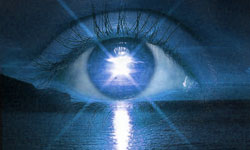To break your bad habits that are causing blurry vision, you need to break up what you’re doing into separate tasks so that you can understand what you’re really doing and be conscious of it as you’re doing it. There … more...
Category: Vision Improvement
Seeing a string of details
I want to clarify how to look at adjacent details better. I described this specific method in my last blog post about looking at adjacent details. The idea here is to learn to shift your attention the shortest distance … more...
Improving vision by looking at adjacent details
In my last blog post I suggested that I would talk more in detail about patterns of the right way to go about looking at things.
The idea of “staring” is a big no-no in literature about the Bates method. … more...
Myopic Attention Disorder
I see myopia as a specific type of attention disorder. I feel like Bates and later writers on vision improvement have not given enough credit to the factor of attention in causing blurry vision and related disorders, or they haven’t … more...
Re-creating Your Programming
When you read Bates’s book, don’t put too much importance, for your own purposes, to his absolute statements about “perfect” vision and how such-and-such is true all the time.
When you think about perfect vision and compare it to what’s … more...
The right way to move
First, a tip.
“Hot potato” is a game where everyone quickly tosses a ball around, and when the music stops the person holding the ball is eliminated. It suggests an analogy for a way to practice seeing. Every point you … more...
Relaxing the eyes and avoiding the issue
I’m going to start stepping on some toes by making some posts about the convoluted stuff that has become kind of standard in the material on improving vision with the Bates method, as presented in various books or by various … more...
Baby steps: Giving up everything but one thing
Let me show you something. I haven’t drawn this out like this before, so let’s see how it goes. Take this in baby steps:
- Close your eyes. Think of the smallest point you can imagine, like the head of a
Speak with your actions
What are you supposed to be learning? Are you detaching from the process? How is it that you want to see details when the actions you’re taking in every moment say you don’t?
When you look at an object, notice … more...
What are you doing now? How will you begin?
In every moment you have a choice in what you do with your eyes. In every moment you can be aware of what you’re doing, and change it, or you can let yourself go on and do what you’ve always … more...
The simplicity begins
So for those of you who just tuned in, we’re working on removing glasses from the eyes of everyone in the world and teaching them to see with their own eyes. The basic principles of how to see correctly are … more...
